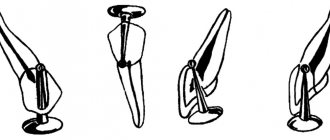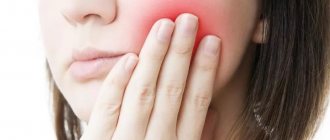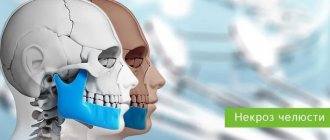Content
- Dental restoration methods
- Dental restoration with pins
- Dental restoration with inlays
- Dental restoration with crowns
The success of endodontic treatment largely depends on the subsequent restoration of the upper part of the tooth. It is the correct restoration of the crown after filling that is the key to a long-term, high-quality result without the risk of re-infection. Canal treatment is not considered complete until the doctor can guarantee that there is no risk of re-contamination.
Guarantee
Endodontic dental treatment in our Center is carried out in the LifeTime Warranty format in accordance with the Center’s Unified Quality Standards
Retreatment of dental canals is a painstaking work that requires the experience of a doctor, the use of modern high-precision equipment, high-quality materials, functional tools and high-quality equipment.
We have warned against the risks of possible complications at every stage, so we can safely provide a lifetime guarantee for treatment and re-treatment of canals.
- Modern support from high-precision diagnostics to a dental microscope .
- Safe filling materials of the latest generation from trusted manufacturers with high aesthetic and strength characteristics.
- The Center employs highly qualified endodontists who save even teeth sentenced to extraction .
Methods of dental restoration after endodontic treatment
Severely damaged teeth must be strengthened with additional means. This will help avoid fracture of the tooth stump and maintain its strength for a long time. Intra-canal pins and stump inlays are used as support. The choice of support element depends on how badly the tooth is damaged and what method will be used to restore it. Installation of an intracanal pin is advisable if there are only two walls of the crown, the height of which should not be less than three millimeters.
The main principle of endodontic treatment is the destruction of microorganisms in the infected root canal system or the prevention of their penetration into the canals. This is what we want and achieve during our endodontic and subsequent orthopedic dental treatment. In other words, competent endotherapy is focused on asepsis and disinfection while preserving the remaining tooth structure. It is for this reason that we use the Rubber Dam tooth isolation system, since saliva is a microorganism-containing liquid and, accordingly, an infectious factor.
We cannot allow oral fluid to come into contact with the internal structures of the tooth during the treatment of caries and its complications, because we are talking about quality treatment! And, for the same reason, our clinical practice involves the correct restoration of the form and function of the tooth after endodontic treatment, since the presence of an adequate coronal restoration helps protect the treated tooth root canal system from coronal leakage (infection entering the root canals from the coronal part of the tooth) and repeated infection. This is a powerful argument in favor of restoring the tooth crown after endotherapy is completed.
Restoration is the logical conclusion of the root canal treatment
Thus, removing all bacteria from the tooth is our main goal, what we strive for and achieve with our endotherapy. We treated pulpitis or periodontitis - we got rid of germs, well done everyone! But, it is too early to put an end to this, since the most advanced endodontic treatment can be spoiled by coronal leakage - the penetration of microorganisms of the ubiquitous saliva from the oral cavity into the canals in conditions of leaky crown restoration. This means that it is very important to maintain the treated tooth in this disinfected state, preventing further penetration of bacteria, which is achieved by high-quality direct restoration or indirect orthopedic (according to indications) restoration of the tooth crown using an intracanal structure to achieve retention or without (again, according to indications). In other words, adequate tooth restoration is the protection of the canal treatment performed and the tooth itself, and this is the final stage of complex treatment.
In cases of endotherapy, when caries did not have time to significantly destroy the tooth structure, but reached the pulp (nerve) of the tooth and caused its infection and irreversible inflammation, while all the walls of the tooth crown of sufficient thickness and the slopes of the cusps remained intact, direct restoration (composite filling) or indirect ceramic inlay (microprosthesis). Depending on the preservation of the slopes of the cusps, the inlay (onlay) can be: with overlapping of the cusps of the tooth (overlays, onlays) or without (inlays). Although, frankly speaking, this is a rare clinical situation.
Often, when we talk about primary endodontic treatment or root canal retreatment, we are dealing with serious damage to the coronal part of the tooth. Therefore, indirect orthopedic restoration using artificial crowns of various types will be indicated (metal-ceramic, all-ceramic, metal-free pressed ceramic (e-max), all-ceramic on a refractor, metal-free zirconium crowns, all-cast metal).
Many factors influence the choice of a specific type of crown for a particular situation, namely:
Aesthetic indications, occlusion conditions, budget, degree of tooth decay, and much more. What advantages will a crown give us in case of significant loss of tooth structure in addition to protection against canal leakage? This is a complete restoration of the anatomy and function of the tooth in occlusion, recreation of aesthetics, covering the cusps, which will help prevent vertical cracks in the walls of the tooth weakened by caries, often extending to the root (which may be an indication for tooth extraction!), maintaining space with the antagonizing tooth, preventing its dental-alveolar advancement, thereby preventing unwanted changes in the bite.
It is important to note
: The protective effect is enhanced if the coronal restoration is placed soon after completion of endodontic treatment. If we are talking about damaged teeth, where primary treatment (pulpitis) takes place: the sooner the better! If we are talking about teeth with chronic periodontitis, where there are periapical foci of bone tissue destruction, monitoring of the treated tooth is important, during which the canal treatment is monitored, the importance of which must be understood by both the doctor and the patient!
The determining factor here will be the healing peaks: 6 months - 1 year - in some rarer cases 2 years (for large periapical lesions). Accordingly, it will be very important for clinicians who have completed this retreatment to confirm the healing of the existing inflammation in the periapex (around the apical part) of the root. For the period allotted for healing, a temporary indirect (in the laboratory) or semi-direct (in the clinic) crown is made. When healing of the periapical destruction is confirmed (on average, after 6 months, minimum 1 year), the temporary restoration can and should be replaced with a permanent one.
I would also like to touch on the topic of using intracanal structures (pins, intracanal inlays), since this is one of the most common questions from patients. Their use is inevitable in cases of severe loss of tooth crown structure. These products help to obtain retention by installing inside the root canal space and distributing the load on the root, being an additional means of retention of the stump (the supragingival remaining part of the tooth) since the tooth’s own tissues of the tooth crown are simply not enough.
The installation of intracanal structures entails an additional minor, but still, removal of root dentin, thereby causing some weakening of the root. Thus, a pin or an intracanal inlay cannot “strengthen the tooth” in any way (such a deletant myth-illusion is heard from time to time). Such a restoration is a kind of compromise, but a compromise according to strict indications! In other words, these are dentist assistants in restoring a severely damaged tooth, up to certain limits, of course. In this case, the criterion for the limit of destruction of the tooth structure is the ferul - the minimum amount of the tooth’s own intact tissues, which must be covered with a crown. Ferul is the determining factor in the preservation of a tooth based on the degree of its destruction.
Based on the above, I would like to note that medicine is an inexact science; there are no biological absolutes. However, there are different degrees and definitions of success. Successful endodontic treatment refers to the resolution and/or prevention of apical periodontitis or the preservation of a functional tooth. That is, the key to success in endodontics is the fight against microbes that have already settled inside the canals and their disinfection. But there are also many microorganisms in the oral cavity as part of the oral fluid. They are the cause of microleakage - one of the main reasons for treatment failures.
Therefore, it is important to pay due attention to preventing this leakage both during and after root canal treatment. Focusing on sealing the tooth, which we achieve with adequate restoration, is the key to long-term dental treatment success.
Restoration with pins
Modern dentistry is increasingly using fiberglass pins, abandoning the usual metal pins and cast inlays. Fiberglass itself does not have enough strength, but when properly combined with composite materials, the tooth receives a very strong fixation. The material has elasticity close to natural dentin. Another advantage of fiberglass reinforcement is aesthetics. The fiber is transparent and will not spoil the appearance of the tooth after restoration.
PROMOTION
Ceramic veneers
RUB 12,500
What does the cost consist of?
When re-treating dental canals, the standard cost of treatment consists of the following items:
- diagnostic examination under a microscope
- mechanical and medicinal treatment of canals
- 3D canal filling
- restoration of tooth shape
The price depends on the number of channels. By default the price includes :
- consultation with an endodontist
- local anesthesia
- using a microscope
- use of rubber dam and optagrate
If additional measures , the following will be added to the cost:
- unsealing of canals filled with resorcinol-formalin method or cement
- removing a pin or foreign body from the canal
- temporary filling with medicinal pastes
Please take into account that sometimes the final cost of root canal treatment cannot be predicted in advance. Each case is individual, only after X-ray diagnostics and inspection of the tooth under a microscope can you draw up a full estimate and determine the number of visits.
Goals and stages of endodontic treatment
Before starting treatment measures, the endodontist conducts diagnostics and decides whether they are justified. If the disease is seriously advanced, then even the most complex methods of endodontic treatment will not give the desired result: the patient will waste money that he could spend on prosthetics. Unfortunately, removing a unit is an extreme measure, which CELT specialists try to resort to as rarely as possible, but sometimes it is the only possible one.
In situations where a tooth can be saved, the doctor directs his efforts to stopping pathological processes in its root canals and eliminating the risk of their re-development. He strives not only to preserve the unit, but also to extend its service life. To this end he:
- Excises the affected pulp tissue (partially/completely);
- Treats and disinfects canals, giving them the optimal shape for filling;
- Cleans them thoroughly, removing pathological contents;
- Carry out their filling and sealing;
- Takes measures to increase the effectiveness of medications.
It is customary to distinguish the following stages of endodontic treatment:
- X-ray examination allows you to accurately determine the feasibility of treatment. If the answer is positive, it allows the doctor to develop his tactics;
- Anesthesia – eliminates any discomfort in the patient, increases the effectiveness of the manipulations;
- Depulpation – aimed at removing the nerve. It can be carried out in one or two doses. In the latter case, a special paste is applied to it, under the influence of which it dies;
- Treatment of canals is aimed at expanding them, removing pathological contents from them, disinfecting and drying. If inflammation is detected, a medicinal paste is placed inside and a temporary filling is placed for several days;
- Gutta-percha filling – fills voids and eliminates the re-development of inflammatory processes;
- Restoration of the crown part of the tooth restores aesthetics and functionality. The materials and method of work are determined depending on the degree of destruction of the original unit. Correctly carried out manipulations extend its life.











